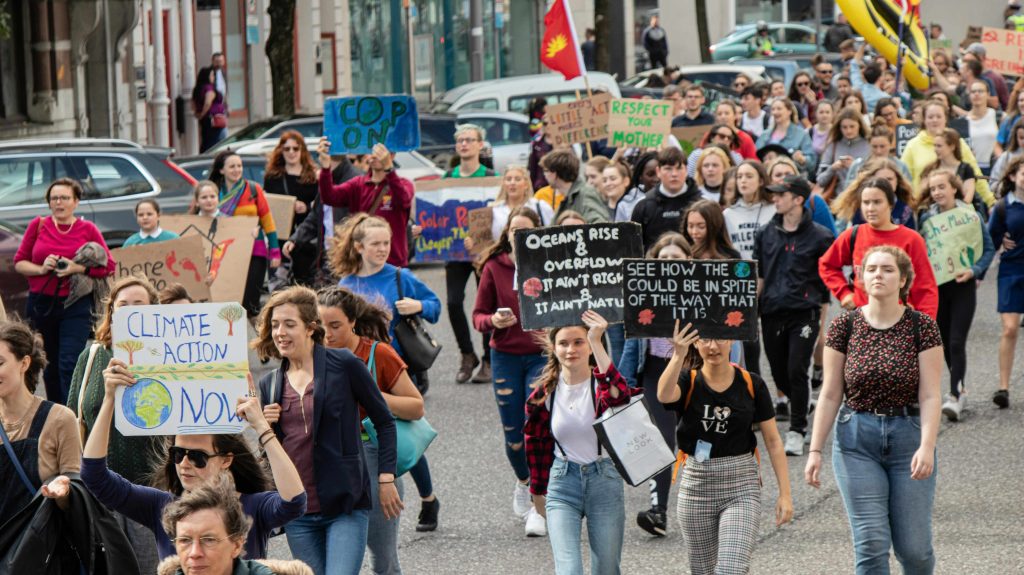CLIMATE AND MIGRATION WORKING GROUP
Should the world expect migration—voluntary or forced— because of climate change? What climate-relevant push and pull factors will govern the new demographics? It will depend on climate development. COP28 is now history. In the final declaration, the COP28 decided on “the transition away from fossil fuels”, after having ditched the concept “phase out” fossil fuels. Next, individual countries are now to update their nationally determined contributions (NDC’s) within two years.
However, it is already debated whether the outcome of COP28 is on the non-binding side for what the world needs to curb the global average rise in temperature of 1.5°C above preindustrial level by 2100—the Paris Agreement. Whatever the case, it is more likely than not, that achieving the 1.5°C goal by 2100 today is only possible by first overshooting 1,5 °C, probably before 2050, and then implementing CO2 capture—be it by biological or technological means—to bring us back to the required level to stay below 1.5°C by 2100. This strategy is dependent on CO2-capture & -reducing processes that have yet to be innovated on a relevant climate change scale.

If the current trend in emission reductions continues, the world is heading towards a temperature increase from around 2.2°C to as much as 3.5°C in the year 2100. As social researchers, we must ask what should realistically be the baseline for a discussion on climate-driven migration as a possible consequence of climate change; 1.5°C, 2.2°C, or 3.5°C? Migration has previously been a way out of crises like this one, affecting the possibility of living good, or at least decent, lives. Migration shaped us, as a species and largely as individuals, whether we have migrated ourselves or carry genes that testify to how we have arrived at where we are now.

Climate change is not the main cause of migration today, except in some cases (for example, in Somalia). However, as the climate effects become recurrent and severe, especially in areas as close as the Mediterranean, they can combine with economic and other problems and cause increased international migration. And as the effects of slower climate changes impact livelihoods, more people will migrate.
Whether climate changes trigger an increase in insecure, unplanned, irregular migration will largely depend on government decisions to adapt to climate changes and provide legal pathways and systems to help people move. Policies addressing climate migration are still in their early stages but are gaining attention as the consequences of climate change become increasingly apparent.
People are now on the move due to climate change, whether we are aware of it or not. There are very few examples of migration being halted over time, even though our nation-states, bureaucracies, and border regimes attempt to do so. It would go too far to have a focused discussion to include what migration can mean economically, socially, politically, and culturally, in terms of conflicts, opportunities, threats, and the eternal question of national identity. Migration is both intranational and border crossing, but transnational migration routes will possibly constitute a significant portion of mobility. The challenge is to use the advanced apparatus of the nation-state and our multinational institutions to regulate, facilitate, and thus control migration flows.
Decamp North or Decamp to Higher Mountain Ground
Environmental and climatic factors serve as migratory drivers and pull factors, together with economic, social, political, and demographic aspects. So, what would be the pull factors for creating a better life when climate-driven emigration is the solution? There are undoubtedly numerous factors, but to simplify the picture in this discussion, areas with pleasant climates, space, resources, reasonable stability, and well-developed social structures are likely pull factors. In Europe, the Nordic region, especially the Scandinavian Peninsula with Finland (pleasant climate projected toward 2100, ample space, particularly in mountainous and/or rural areas with large wilderness areas), resources (especially marine), stability, and social structure, are potential pull factors. The British Isles and Ireland (pleasant climate projected toward 2100, resources, stability, and social structure – somewhat uncertain with space) are also considered. Northern parts of western and central Europe and the Baltic countries (pleasant climate projected toward 2100, space, resources, especially agrarian, stability, and social structure) are identified as potential pull factors.
The working group aims at addressing the complex interplay between global environmental change and migration in mountain areas. In other words, we ant to explore the different migration movements and outcomes that can be expected in the future as a result of the influence of climate and global change.
